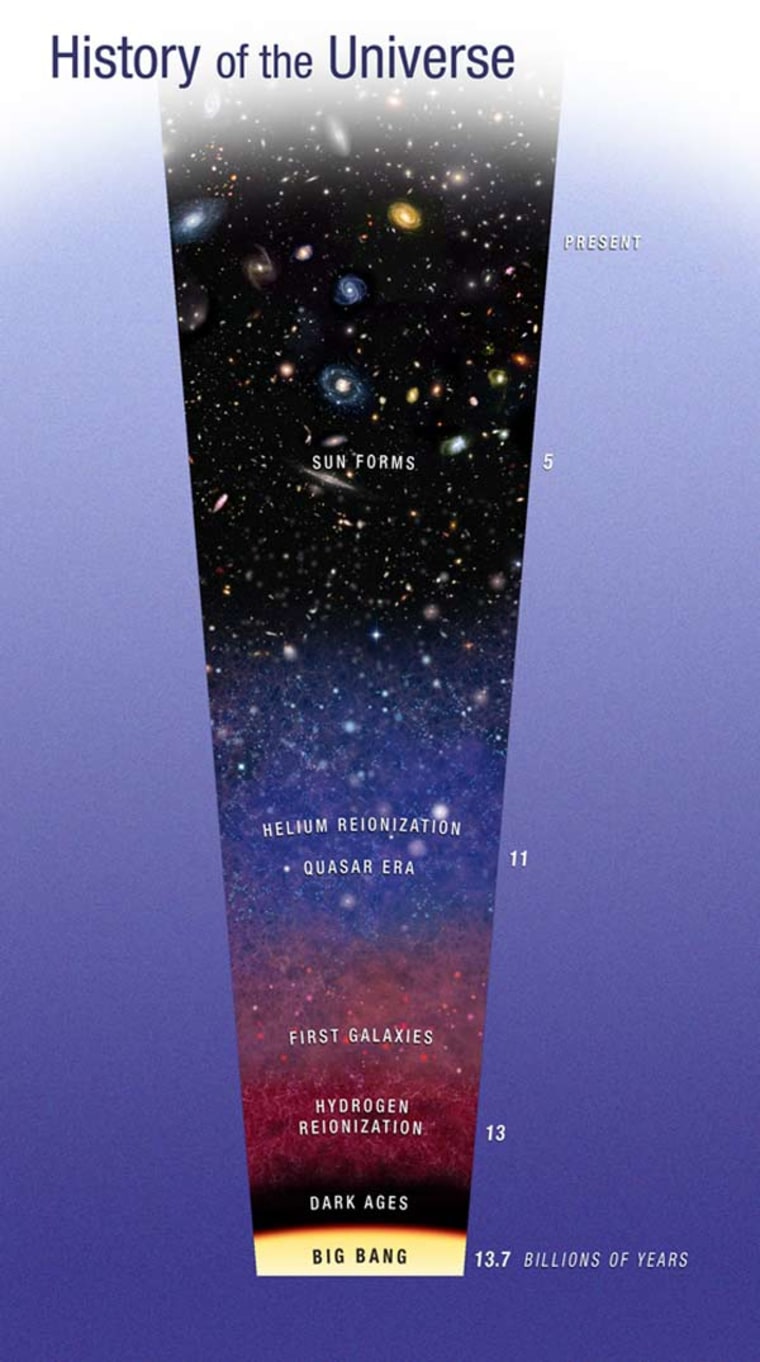A galactic heat wave 11 billion years ago unleashed fierce blasts of radiation that altered how some galaxies formed, a new study finds.
During this period of universal warming which astronomers identified as 11.7 to 11.3 billion years ago ultraviolet light, emitted from quasars, stripped electrons from helium atoms in a process known as ionization. The resulting heat wave stunted the growth of some dwarf galaxies for nearly 500 million years, researchers said.
Quasars are found in the centers of some faraway galaxies and contain supermassive black holes. These extremely luminous cosmic objects bright in radio waves, X-rays and other forms of electromagnetic radiation can be detected from more than 10 billion light-years away. A quasar's energy is thought to emerge from matter spiraling at high speeds into the supermassive black hole.
In the new study, the researchers used the Hubble Space Telescope to determine that a burst of quasar activity caused heating of the intergalactic helium from 18,000 degrees Fahrenheit (over 9,980 degrees Celsius) to nearly 40,000 degrees F (over 22,200 degrees C). This hot spell inhibited the intergalactic gas from gravitationally collapsing to form new generations of stars, affecting the formation of small galaxies. [ Hubble Telescope's Most Amazing Discoveries ]
"In the early universe, this burst of heating, we think, prevented a lot of these low-mass galaxies from forming stars," study leader Michael Shull, a professor of Astrophysics and Planetary Sciences at the University of Colorado in Boulder, told Space.com. "This burst of heating goes into the intergalactic helium, heats the gas up, and changes galaxy formation, particularly with dwarf galaxies."
The research will be detailed in the Oct. 20 issue of The Astrophysical Journal.
Looking through Hubble's eyes
Shull and his team of researchers used Hubble's Cosmic Origins Spectrograph to probe the invisible, remote universe with improved power and sensitivity, compared to other space-based spectrographs.
The astronomers studied the spectrum of ultraviolet light produced by a quasar located approximately 11 billion light-years away.
"I wouldn't call it the edge of the universe, but it's getting close," Shull said.
The observations allowed the researchers to produce more detailed measurements of the intergalactic helium than had previously been possible.
"For the first time, we saw that the heating is intermittent from one place to another," Shull said. "Quasars are very far apart millions of light-years apart so that creates very patchy re-ionization. You have patches that are cold and dark, and other patches that are ionized and heated."
"Dwarf galaxies in the dark zone didn't get stunted," he said. "In the patches that are ionized and heated, these galaxies get stunted in their growth or are maybe even destroyed."
Pinning down a time
For the last five years, theorists have been trying to pin down the consequences of "helium re-ionization" in the universe, Shull said.
The process is known as helium re-ionization because the universe went through an initial heat wave more than 13 billion years ago, when energy from early massive stars ionized cold interstellar hydrogen from the Big Bang that started the universe. The universe is estimated to be about 13.7 billion years old.
As a result of the theoretical work, scientists knew what to expect, but until now, did not know the exact timeframe of when this re-ionization took place.
"Now we know when it happened," Shull said. "I imagine quite a few more dwarf galaxies may have formed if helium re-ionization had not taken place."
The helium's re-ionization occurred at a transitional time in the universe's history, when galaxies collided to ignite the energetic quasars.
The re-ionization of the helium, and the concurrent warming effect, was spread out over the course of over 500 million years, after which the intergalactic gas cooled down and dwarf galaxies were able to resume their normal process of formation.
Shull and his research team are already hard at work following up on the results of this study. Since their initial observations only had one perspective with which to measure helium's transition to its ionized state, the researchers are keen on expanding these measurements using sightlines around the quasar, as well as different quasars in other parts of the universe.
"We're going to look at a couple more quasars in a different neck of the woods to see if this is happening the same way everywhere," he said.
